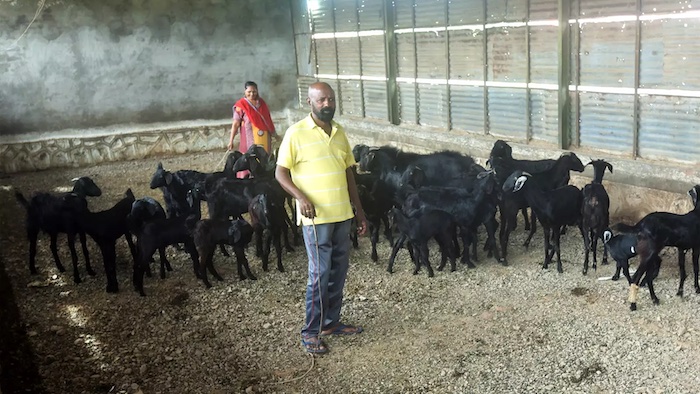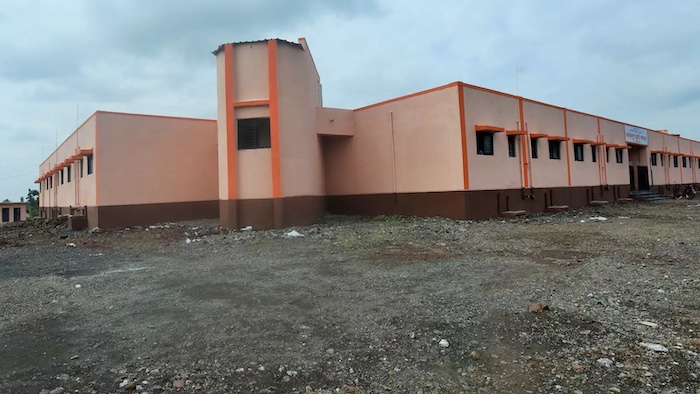Swatantrapur open colony
This is a collection of articles archived for the excellence of their content. |
A pioneering experiment
As in 2020
Gitesh Shelke, February 27, 2020: The Times of India

From: Gitesh Shelke, February 27, 2020: The Times of India

From: Gitesh Shelke, February 27, 2020: The Times of India
A narrow, cobbled track from the main road is the only way in. With no gates, guard posts, barbed wire or high walls, it's difficult to believe those serving life sentences are housed.
But the Swatantrapur open colony — deep inside Maharashtra's Sangli district, in the town of Atpadi — is not a traditional jail. Convicts live with their families here, grow vegetables in the prison's farms, earn a wage, and make daily runs to a market near a bus stand 2km away. They can go anywhere as long as they are back in time for the 7pm roll call. And they have to wear the jail uniform only on ceremonial occasions like Republic Day and Independence Day.
The colony, set up in 1937, started as India's earliest experiment in prison and criminal reform. Interestingly, some scenes of V Shantaram’s film ‘Do Aankhen Barah Haath’ (1957) were shot here. In the 83 years since, the facility has grown to span 61 acres, has been home to hundreds of inmates and in 2019, was given a completely new wing. Inside this section are rooms with painted walls, tiled floors and kitchenettes. They are a marked improvement on Swatantrapur's original, but decaying, cell block which lost most of its roof and walls in the heavy rains that hit the area in last year.
The inmates reveal how the prison's founding principle of reform through compassion has helped several life convicts find both calm and purpose. Today, Roshan Harishchandra Mhaiskar has conveniences he hasn't had in the 18 years he spent behind bars for murder. In 2002, Mhaiskar was 31 when he was sentenced to life for killing a man after an argument. He was dispatched to Nagpur central, where he would spend most of his 30s. But as the final months of his sentence approached, Mhaiskar was shifted to Swatantrapur on account of good behaviour.
Instead of screams, his mornings are now filled with birdsong. On some days, he has tea with the some of the jail’s nine guards out in town. The only rule to remember is this: you run, you’re back in for longer; you stay, and your term gets shorter. “I will earn a remission of 360 days for 365 days of good conduct. It will reduce my term. So why would I run? I have already served most of my sentence. If I decide not to return from the market, they have my details. I will be back inside a walled prison for longer,” says Mhaiskar. This is what jailers call the ‘fence of the mind’. “Imagine spending nearly 20 years inside a walled prison and then attempting an escape from here, especially when you know you will be thrown back in with the general population. They have families here. Why would they give it all up? The walls are already in their minds,” says Ashok Kadam, the prison superintendent.
He has a flat-screen TV, shelves full of utensils and a full-fledged kitchen. Inmates receive a remuneration of Rs 2,300 per month and are allowed to bring whatever amenity they can afford.
The prison colony currently has just six inmates of whom three are staying with their families.
That is something that makes Swatantrapur an important prison reform that’s economically viable. “These inmates work in farms and rear livestock. During their stay, they will be generating revenue for the prison. It’s also an excellent example of corrective reforms,” says Meeran Chadha Borwankar, former director general of police (NCRB, Delhi) and former ADGP (prisons) of Maharashtra.
These inmates work in farms and rear livestock. During their stay, they will be generating revenue for the prison
In a country that has jails with occupancy rate of 115%, open colonies can offer a solution to overcrowding as well as save on expense incurred on inmates. That’s why Maharashtra is contemplating on setting up another open colony near Yerawada prison for 100 inmates. The state prisons department has already reserved seven acres of land for the complex. “Swatantrapur is far off. We need more such facilities near big cities and towns,” says Sunil Ramanand, additional director general of police (Prisons).
The only time someone tried to escape from here was in 1954 when inmates Yeda and Namdev ran off to the hills, only to return a few days later suffering from guilt and remorse. The ‘mind fence’ had worked. It has also worked so far for Papa Sayyed Ali (63), who is from Kalyan, Mumbai. He was convicted in 2009 for a murder he committed in 2002 and given life imprisonment. His good conduct during his undertrial years and stints at the crowded central prisons of Kalyan, Kolhapur and Yerawada ensured that he was chosen for Swatantrapur. He was given a form to sign, then moved to an open prison before being sent to the prison colony. Soon his wife Khairunisa Ali joined him. The couple has three sons and a daughter who stay in their Kalyan home. But they visit often. “I struggled to stay sane in the walled prisons. But I am enormously grateful for the dignity this place allows,” Ali says.